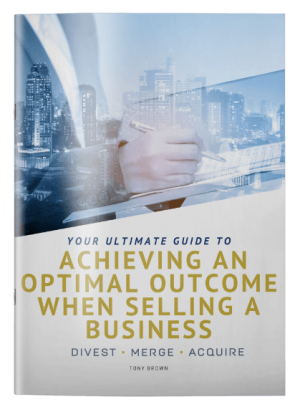If you own a business that has been GFC affected and still want to sell (or are advising someone in this position), there are ways to proceed sooner rather than later.
Market value of a business is linked directly to its free cash flow. The normal benchmark for value is a required rate of return (capitalisation rate) applied to Future Maintainable Earnings (FME). Fluctuating historic and projected earnings make it more difficult to determine the underlying level of FME. In addition, greater than usual fluctuations can increase the perceived risk, and may prompt requirement for a higher capitalisation rate, the reciprocal of which is a lower earnings multiplier.
The overall effect may be a reduction in assessed value, even if the true underlying earnings have returned to ‘normal’ levels.
The GFC has affected the majority of industries to some degree, whether it be lower volumes, tighter margins or bad debts. These may have impacted on profit trends and made assessments more varied. Recent floods and the subsequent rebuilding are expected to further affect forecasts.
If a business has $1M EBIT for two years, then zero profit for the next year followed by YTD results showing a return towards historic levels – an average of earnings incorporating the depressed year’s results yields a distorted estimate of future earnings.
Whilst it may be justifiable to exclude unusually high or low historic results from the assessment where a return to ‘normal’ earnings is evident thereafter, if the unusual results are in the most recent full-year it does not automatically follow that the subsequent year will return to the historic ‘norm’. Markets change, complete recoveries are not assured and new baselines are not always easy to plot.
In this situation, it is important to provide detailed and substantiated forecasts of the current full year’s results. Such an assessment takes into account current Year to Date (YTD) trading results, plus projected results for the remainder of the period. Substantiation would include actual orders in hand and anticipated forthcoming work.
What are the options?
The business owner has some options, including the more obvious ones:
- Wait for the market and profits to stabilise, and establish a new consistent track record. The downside is that this strategy may take several years and the result is not assured.
- Prepare a full year’s trading report for a more current period, say 12 months to February 2012.
- Sell at a discount. Not everyone wants or needs to maximise the sale price outcome, and other considerations may take priority;
With some creativity and expertise, it is possible to structure an agreement that can deliver the true value of the business and crystallise a sale sooner. A structured price model with some of the proceeds paid on settlement according to baseline recent performance, with provision for further payments as profit milestones are reached. If the owner is confident that the worst is behind the business, then it may be in everyone’s best interest to share the risk and responsibility to manage the business through to smoother waters.
It is always preferable to have a clean transaction without strings attached. However, provided the up-front component is sufficient to allow the seller to proceed and further payments are considered a bonus, then the ultimate result could work well for a retiring business owner.
Your accountant or a Divest Merge Acquire advisor can provide more information regarding these options.

